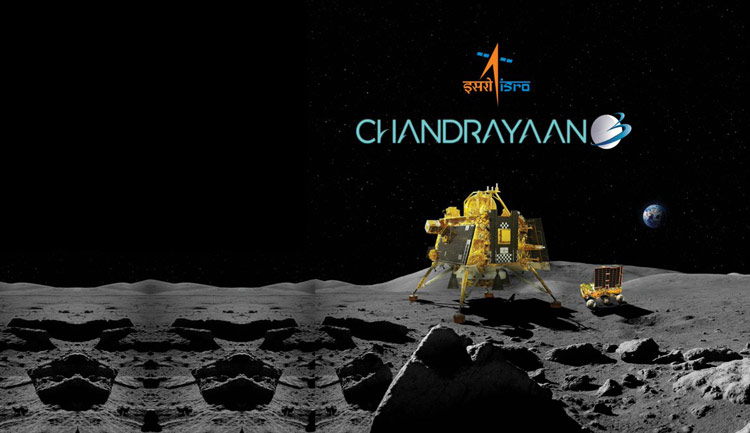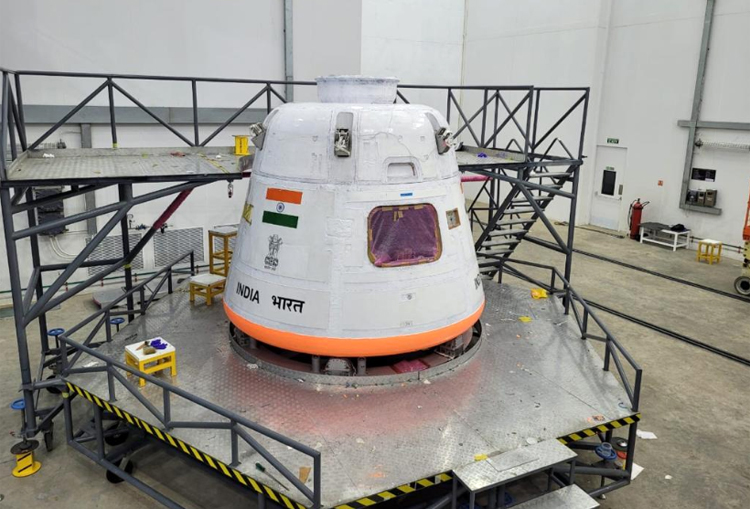INDIAN ARMED FORCES CHIEFS ON
OUR RELENTLESS AND FOCUSED PUBLISHING EFFORTS

SP Guide Publications puts forth a well compiled articulation of issues, pursuits and accomplishments of the Indian Army, over the years

I am confident that SP Guide Publications would continue to inform, inspire and influence.

My compliments to SP Guide Publications for informative and credible reportage on contemporary aerospace issues over the past six decades.
ISRO Rules Space
From Lunar dust to Martian skies, ISRO's stellar odyssey is pioneering India's journey beyond Earth
 |
The Author is Former Director General of Information Systems and A Special Forces Veteran, Indian Army |

The Indian Space Research Organisation (ISRO) continues to soar high in space. In a recent Lunar and Planetary Science Conference held in Texas, ISRO scientists presented a paper which revealed that the Chandrayaan-3 mission had made history on August 23, 2023, with an incredibly gentle landing despite the powerful engines required for descent, with the lander kicking up minimal lunar dust. ISRO's space schedule is jam packed with a series of missions planned one after another. Prime Minister Narendra Modi recently announced the names of the four astronauts selected for the Gaganyaan mission. From scores of test pilots who enrolled to become astronauts, 12 made it past the first level of selection in September 2019. After multiple rounds of selection, the four finally selected were sent to Russia in early 2000 for initial training, which was completed in 2021. Since then, the four have been undergoing training by multiple agencies. ISRO has been working on equipping its Human Space Flight Centre (HSFC) with various simulators for the training.

ISRO has successfully tested the human-readiness of the cryogenic engine which will be used on the LVM3 vehicles for all Gaganyaan missions. With this, the vehicle has been adjudged fit to safely transport and bring back humans to and from space. ISRO's heavy lift launcher, the LVM rocket, has been identified as the launch vehicle to be used during the Gaganyaan missions; comprising a solid, a liquid and a cryogenic stage, these systems can be configured to ferry humans into space.
ISRO has successfully tested the human-readiness of the cryogenic engine which will be used on the LVM3 vehicles for all Gaganyaan missions

The manned Gaganyaan mission will fly a three-member crew into a low earth orbit at an altitude of 400 km for a period of three days. The first unmanned Gaganyaan–1 mission is scheduled in the upcoming few months. The CE20 cryogenic engine will power the space vehicle during the cryogenic stage of the liftoff. The final tests were performed on February 14, 2024 at ISRO's High Altitude Test Facility in Mahendragiri in Tamil Nadu. Prior to this, the CE20 had undergone 39 hot firing tests under varying operating conditions.
The manned Gaganyaan mission will fly a three-member crew into a low earth orbit at an altitude of 400 km for a period of three days
ISRO's upcoming major space missions include the following:
- Gaganyaan–1. This is expected to take place in July 2024, after the TV-D1, TV-D2, TV-D3 AND TV-D-4. It was proposed in April 2022 that the crew module depressurised.
- Gaganyaan–2. Also planned in 2024 (date not decided), this will be the second flight before the inaugural mission.
- Shukrayaan. Planned in 2025, this will be a Venus Orbiter Mission to study the atmosphere of Venus as part of planetary exploration.
- Mangalyaan. Planned in 2026, this will be India's second interplanetary space mission to Mars; orbiting to study the atmosphere of Mars.
- Lunar Polar Exploration Mission. Also planned in 2026, this concept mission is to be in collaboration with the Japan Aerospace Exploration Agency (JAXA) to explore the southern polar region of the Moon.
- Gaganyaan–3. Planned in 2026, this will be the first crewed mission designed to make India the fourth country to independently send humans to space.
- Chandrayaan–4. Planned in 2028, this lunar mission, fourth in the Chandrayaan series, is designed to send multiple modules for different phases.
- Bharatyiya Antariksha Station. This human spaceflight planned in 2028-2035 is ISRO's modular space station. It would weigh 20 tonnes and maintain an orbit at approximately 400 km above the Earth, where astronauts could stay for 15-20 days.
- AstroSat–2. This is a space telescope planned as the successor id AstroSat–1, with an 'Announcement and Opportunity' issued inviting ideas and the development of instruments for astronomy and astrophysics.
Chandrayaan–4 intends to land near the Lunar south pole and collect rock samples which will be returned to Earth for analysis
According to Nilesh Desai, Director, ISRO's Space Applications Centre, Chandrayaan-4 aims to build on the accomplishments of the recently concluded Chandrayaan-3 mission while attempting more complex objectives. Planned to be launched in 2028, Chandrayaan-4 (also called the LUPEX mission) is to bring rocks from the Moon back to the Earth. If successful, Chandrayaan-4 will make India only the fourth nation to bring back samples from the lunar surface.

Chandrayaan–4 intends to land near the Lunar south pole and collect rock samples which will be returned to Earth for analysis. This data could provide insights on lunar resources like water which may support future human colonisation. The mission will deploy a 350-kg rover capable of traversing larger distances compared to its predecessor. The lander will perform the tricky maneuver of touching down along the hazardous rims of lunar craters that have been unexplored thus far.
ISRO is also planning to send Indians to the Moon by 2040
The success of Chandrayaan–4 hinges on safely retrieving the samples and bringing them back to Earth - a technically challenging endeavour that will require two launches. The landing will be similar to Chandrayan-3 but the central module will come back after docking with the orbiting module which will later separate above Earth to re-enter the atmosphere and drop the samples. ISRO has already demonstrated a hop experiment with Vikram to show a spacecraft could lift from the Moon's surface, and the Orbiter returned to Earth from the Moon, showing a return trajectory can be achieved.
ISRO is also planning to send Indians to the Moon by 2040. "We have the next 15 years to send a man to the moon," said Nilesh Desai, outlining the agency's long-term vision.





